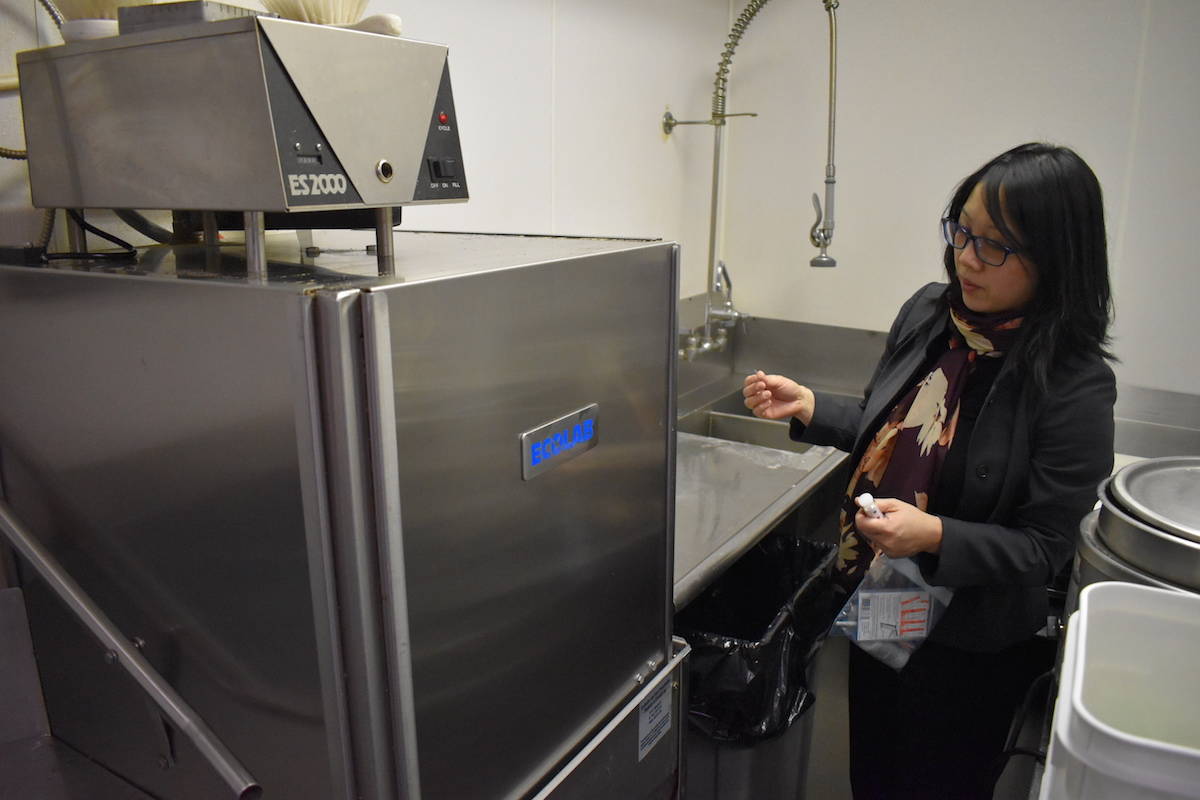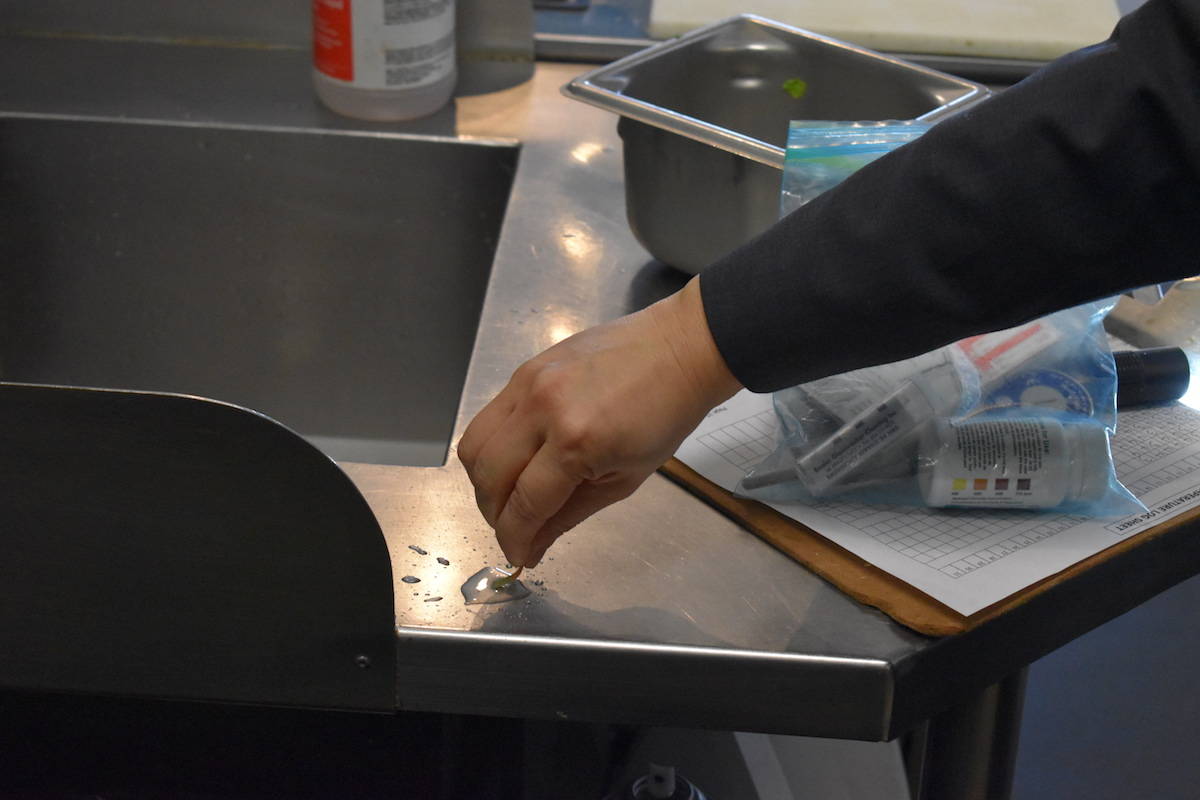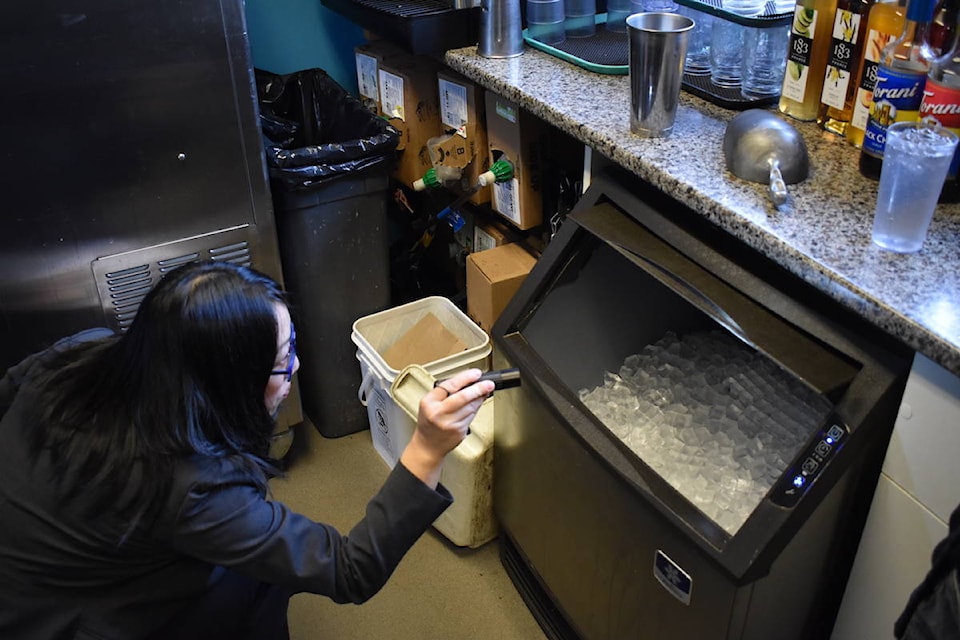Five restaurants in Sidney and North Saanich received high hazard ratings this year and environmental health officers are at the forefront of keeping diners safe.
According to government statistics, one in eight people, around 4 million Canadians, are struck down with food poisoning each year, with 11,500 hospitalizations and 240 deaths.
Island Health (VIHA) runs a rigorous system of mostly surprise inspections to keep diners safe. This regimen combines two considerations – the complexity of food being handled and kitchens’ level of compliance. Following an inspection, a food facility is given one of three ratings: low hazard, moderate hazard or high hazard.
While a number of low hazard ratings are handed out, this is usually due to non-critical violations such as dishwashers not reaching a high enough temperature or for shabby facilities.
Moderate hazard ratings required advice and another follow-up inspection.
In the past year, five restaurants in Sidney and North Saanich received high hazard ratings, for a range of non-compliance issues including rodents in the kitchen. Four successfully followed improvement plans and were deemed a low or moderate hazard in subsequent inspections. Only one restaurant was closed immediately due to serious failings, but has since re-opened and is now judged to be a low hazard.
Joanne Lum has been an environmental health officer for the last 19 years and manages teams of inspectors for VIHA.
“In Greater Victoria, only a handful of facilities are shut down each year,” she says.
VIHA’s philosophy seeks to work with businesses and help them improve. This engagement encourages owners to seek advice, follow improvement plans and, in some cases, even self-report themselves when they have breached the rules.
An example of a facility successfully passing inspection is Fish On Fifth, a Sidney fish restaurant that was spotlessly clean when Lum visited on March 12.
After meeting the owners, Felicia and Arnie Cavanagh, Lum was supplied with cleaning lists, temperature charts and evidence of staff possessing food hygiene certification. Then she was left to conduct her inspection, which included checking the ice locker for mould, testing if chlorine levels were sufficient in the chemical dishwasher, and seeing if fridges and stoves were the correct temperatures. Even handsoap was analyzed for its potency.
A cordial relationship was maintained amid a busy lunch service between Lum and the staff. Lum thinks this is the most productive way of operating.
“[Environmental health officers] have a duty to ensure health requirements have been met based on their legislative mandate, but at the same time, they do want to see their operators succeed. EHOs are not just enforcers – they consult more than they enforce on a regular basis.”
nick.murray@peninsulanewsreview.com
Like us on Facebook and follow us on Twitter


